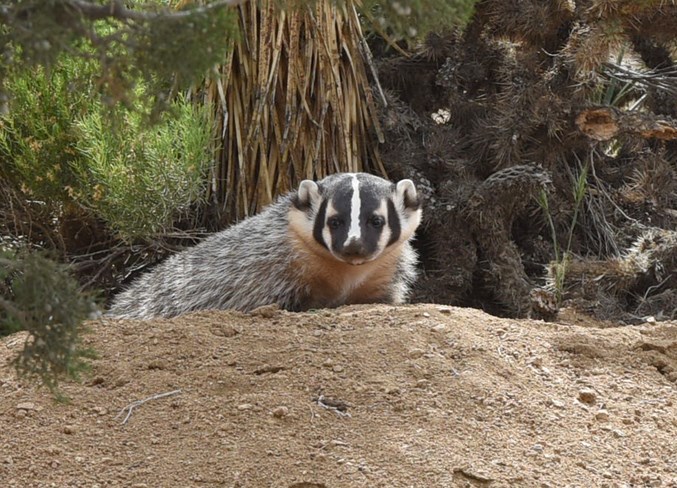For the first time in years, Glenbow Ranch Provincial Park is home to American badgers. Nathan Foy, program and outreach co-ordinator for the Glenbow Ranch Park Foundation, said a family of three badgers – two adults and a juvenile – have taken up residence at the park. The last time the park saw badgers was four years ago, and Foy credits the animals’ return to a saturated food source. Indeed, the two adult badgers have been observed working together, he said, to hunt their main prey – the Richardson ground squirrel. “We kind of have an overabundance of Richardson ground squirrels here,” Foy said. “Traditionally, it was the coyotes and the birds of prey – such as the red-tailed hawk or prairie falcons or even the bald eagle – they would definitely take advantage of that food source. However, there still being an abundance of it, it just makes way for more predators.” One of those predators is, of course, the badger – which, according to Foy, has a mutually-beneficial relationship with other predators. Foy said badgers and coyotes hunt in a symbiotic way. Coyotes have excellent hearing and eyesight for hunting on the surface, he said, and scare squirrels underground, where badgers excel thanks to long claws great for digging. In turn, the badgers drive ground squirrels back above ground, creating additional prey for the coyotes. Foy believed noise from trail maintenance in the park – particularly heavy-duty machinery used for that work – likely drove the badgers away in the past. With no major capital projects this year, the badgers’ habitat has gone undisturbed, making it even more attractive to the animals. Although badgers are thought to be more nocturnal, Foy said the new family at the park has been active throughout the daytime hours. “If you’re walking around, definitely don’t be surprised if you see a black and white face looking at you,” he said. Badgers can be confrontational, but Foy said they tend to keep their distance from humans. Attacks are unlikely, he added, unless you are right above the entrance to the animal’s den. Visitors should therefore stick to the park’s paths. “They’re more scared of you than you are of them,” he said. “[If you] see one, it’s going to be more than 20 metres away, and it’s going to look at you and probably go right back down into its burrow.” Park visitors should also keep dogs on-leash to avoid confrontations between the domestic and wild animals, Foy added.



